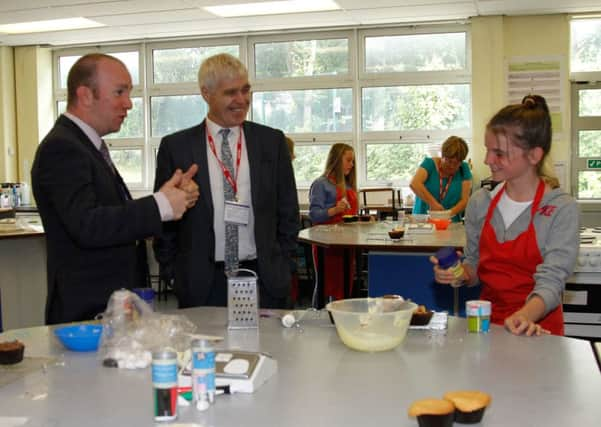Ally Paget: Tick-box culture is holding back progress of pupils


Though hard to define exactly, disengagement manifests as challenging behaviour, missing school and poor academic performance. It has consequences for the lives of individual young people, who face a narrowing of opportunities and earning potential, and run higher risk of a host of other adverse outcomes from teenage parenthood to debt to engaging in anti-social behaviour.
Failure to prevent and address it has consequences for the UK economy, as it struggles for economic competitiveness in a world of changing skills and knowledge demands. But more than just a national issue, this is also an intensely regional one, with youth unemployment a major factor in the North/South divide.
Advertisement
Hide AdAdvertisement
Hide AdRates of ‘NEET-hood’ (young people aged 16-24 not in education, employment or training) are highest in the North East, North West, and in Yorkshire and the Humber, where the figure is 14.9 per cent compared with London’s 10.6 per cent.
Since September 2013, Demos has been piloting a new approach to tackling disengagement in four secondary schools, including Firth Park Academy in Sheffield. In each school, two teachers or support staff received training to work with a group of eight students – four 11 to 12-year-olds, and four 13 to 14-year-olds – identified as being either already disengaged or at particular risk of disengagement.
Staff and students met regularly one-to-one or in groups, to identify things the students wanted to change about school and to help bring those changes about. Among the things students raised were feelings that lessons weren’t interactive enough, and that they lacked stimulating lunchtime activities.
What is important about these views is that they weren’t coming from the kinds of students one would expect to hear from at your average school council meeting, being judged to be at high risk of disengagement; these were the voices of students who, in many ways, were most acutely aware of just what wasn’t working in the school community.
Advertisement
Hide AdAdvertisement
Hide AdThrough these pilots, Demos wanted to know whether these students could be the ones who could also take a stronger role in fixing them. This idea – shifting the balance of power in students’ favour – was the basis for our two-year experiment. It was a form of an approach called ‘co-production’, which has proven successful in other areas of public service delivery.
Our pilot represented the first attempt to test co-production in a UK school setting – and it wasn’t without its challenges. As can be expected in such a time-pressured setting, staff struggled to make space to run the programme on top of existing demands.
Despite a shift towards more autonomous free schools and academies, schools are still bound by funding and inspection regimes that peg rewards to the ticking of particular boxes.
The ‘pupil premium’, to take one example, is a set amount of money received by schools for each pupil who fits certain criteria – primarily, whether or not they are eligible for free school meals. Schools have to spend it on activities, interventions or resources that narrow the ‘attainment gap’ between their best- and worst-off students.
Advertisement
Hide AdAdvertisement
Hide AdThe premium enjoys widespread support and, while the latest figures show it had not yet begun to be effective in narrowing the gap, there are high hopes for it doing so. The list of hypothecated funding and boxes to tick grows longer by the day.
While more often than not, the pupils who took part in Pupil Power ticked several boxes – including coming from poorer backgrounds, having special educational needs, or, alternatively, were in the ‘gifted and talented’ category – collectively, they formed a relatively disparate group.
For teachers trying to keep their heads above water in the face of an ever-growing list of responsibilities, it was difficult for them to devote specialised attention to supporting them through a project requiring so much teacher oversight.
And yet, despite these limitations, the pilot produced some truly inspiring results.
Advertisement
Hide AdAdvertisement
Hide AdThese individual stories, whether of trust developed between pairs of students and staff, and of students’ steady progress from ‘troublemakers’ to ‘decision-makers’, might just be enough to make a dent in the daunting NEET statistics.
So what can be done to turn this potential into a reality for more at-risk children throughout the UK? What is clear, is that these kinds of projects simply cannot be rolled out across more schools unless they are given more space and flexibility to devote to innovative learning.
Of course it is right that schools, like policy-makers, use hard evidence to guide their decision-making, but in the face of such alarming levels of disengagement, it’s time to free schools to also think outside of the tick-box.